Tiger vs. Lynx
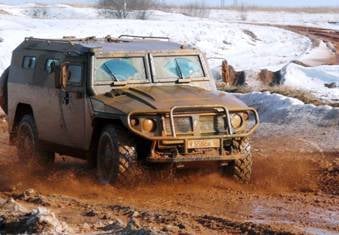 The Russian-Italian joint venture (JV) is planning to release an experimental batch of LMV M2011 Lynx armored vehicles in 65. The head of KAMAZ, Sergey Kogogin, announced this on the air of the Vesti-24 TV channel. The armored vehicle will be created on a parity basis by the Russian KAMAZ and the Italian company Iveco. Simultaneously with the release of the first experimental batch of machines it is planned to prepare their serial production. As Kogogin noted, the LMV M65 "Lynx" is one of the best cars in its class, which is now actively used by coalition forces in Afghanistan.
The Russian-Italian joint venture (JV) is planning to release an experimental batch of LMV M2011 Lynx armored vehicles in 65. The head of KAMAZ, Sergey Kogogin, announced this on the air of the Vesti-24 TV channel. The armored vehicle will be created on a parity basis by the Russian KAMAZ and the Italian company Iveco. Simultaneously with the release of the first experimental batch of machines it is planned to prepare their serial production. As Kogogin noted, the LMV M65 "Lynx" is one of the best cars in its class, which is now actively used by coalition forces in Afghanistan. According to the general director of KAMAZ, a similar car could have been created in Russia, but its development and production organization would take 5-6 years. Further, this idea, according to PRIME-TASS, he confirmed with the words: "How many lives of our soldiers and officers could we lose during this time?" Earlier it was reported about the intention of the Ministry of Defense of the Russian Federation to purchase about 5 of such machines at a price of about 1775 thousand euros per unit over the next 300 years. In connection with the plans of the Ministry of Defense and the statements of Sergey Kogogin, a number of questions arose, which are partially answered in Vasily Semenov’s article “Golden Rake or Iveco Better than Tiger”, published in 12 magazine for 2010. Text of the article given below.
Those who use the metro probably paid attention to the announcement of vigilance regarding advertising there and that “... advertising may contain deliberately false information”. Unfortunately, our high-ranking officials from the military department do not drive the subway and, apparently, do not even assume that advertising is not always true. Therefore, hasty decisions are taken on the procurement of supposedly "super-modern" foreign technology. Although, there may be other reasons for this, including a weak idea of what they buy abroad and what we have.
Indeed, recently the idea of purchasing armaments and military equipment (IWT) abroad in the speeches of high-ranking representatives of the Ministry of Defense of the Russian Federation has been more and more insistent. This idea is argued by the fact that the domestic defense industry is not able to create weapons and military equipment samples that meet all modern requirements. In turn, Russian President Dmitry Medvedev and Prime Minister Vladimir Putin have repeatedly stressed at all meetings with the leadership of the Defense Ministry of the Russian Federation that the Russian Armed Forces should be equipped with only the most modern weapons, if necessary, to purchase such weapons and military equipment abroad, and to buy the best, no matter how much it costs. The decision is absolutely true, but there are several "but."
At first. Before deciding on the purchase of a particular model of weapons and military equipment abroad, it is necessary to clearly understand where and how it will be used in the weapons system of our Armed Forces (VS), is there a need to purchase such a sample?
Secondly. Evaluation criteria and performance indicators for weapons and military equipment samples should be defined. If we are talking about purchasing the “best” ones, then we need to make sure that one or another sample is really the best.
Thirdly. We are talking about the procurement of military products, and not about consumer goods. And they are planning to purchase these products in countries that, to put it mildly, do not have much friendliness towards Russia. Until now, Russia is a “potential adversary” in the military doctrines of these countries. In this regard, the question arises: “Is it possible that due to some political circumstances (disagreement with the fact that Russia recognized the independence of South Ossetia or the recognition of violation of some international standards in helping to build nuclear power plants in Iran, for example ) the supplier countries will suspend the delivery of weapons and military equipment samples or their components at the most inappropriate moment? Will this technique cease to work properly overnight at the most inopportune moment, as it was, for example, in 1991, with the anti-aircraft missile systems from NATO countries delivered to Iraq? ” What the hell is Iraq, this was the case in the newest stories The Russian state two years ago, when the United States announced sanctions to our enterprises or blocked the delivery of already paid units and components for national economic equipment.
Fourthly. All over the world there is a practice of using foreign, including military-technical, achievements in the national interests, but abroad such actions are regulated by holding tenders and competitions with the strict upholding of national interests. Tender committees are being established that are accountable to the highest leadership of the country and are liable to the criminal. Supplies of equipment for tender tests are carried out according to the principle “without payment and without obligations”, while the tests themselves are conducted on the territory of the country, on a competitive basis by independent commissions. It is with such conditions that Russian manufacturers face tenders for the supply of military products to India, the United Arab Emirates, Kuwait, Algeria, Saudi Arabia, Jordan, Malaysia and other countries.
It is enough to recall the recent hype raised in the Indian and several foreign media about the superiority of the Indian tank Arjun over the Russian T-90S. Anyone who has ever had the opportunity to get acquainted with the device and equipment of these two combat vehicles will immediately understand what is the matter: the German engine and transmission, the French fire control system, the English gun, the weapon stabilizer with a hydraulic drive of a locally developed turret, and all together mate poorly with friend. In this regard, it is not entirely clear why in Russia hasty decisions are made to purchase certain types of foreign-made weapons and military equipment?
If we can agree with a big “stretch” that at present the Russian defense industry is not capable of building universal landing craft (UDC) or unmanned aerial vehicles (UAV), then agree with the fact that in Russia they cannot make wheeled armored a technique similar to that created in Italy is by no means impossible. Moreover, Italy in the development of armored vehicles has never been a “trendsetter”. And yet the leadership of the Defense Ministry of the Russian Federation "sunk" on the Italian car. It is on the Italian, although now in the world produced similar machines, far superior to the one that made in Italy.
There are, for example, Dingo 2 or Eagle IV, why not they, since the President of the Russian Federation spoke about the "best"? Probably Italians better advertise their products than the Germans or the Swiss. It is not without reason that they have always been ahead in the production of noodles and pasta ... The decision of the leadership of the Russian department puts the domestic engineering industry under serious blow, because, as reported in the Kommersant newspaper, the adoption of Italian Iveco LMV M65 vehicles to supply the Russian army is intended to replace the Russian special cars supplied to it "Tiger". What is the "Tigers" did not suit our military?
The main advantages of Iveco LMV M65 over Russian analogues are the leadership of the Defense Ministry of the Russian Federation: better comfort and better security, especially mine resistance. All for the sake of preserving the lives of our soldiers! In defense of the social interests of our population, such an argument is presented as the possibility of organizing the production of Iveco LMV M65 vehicles at KAMAZ production facilities, which will allow us to create additional jobs. How beautiful, but how cynical! And that's why. Recall the announcement in the subway and consider in order.
Comfort According to the specifications, the Iveco LMV M65 is capable of carrying 5 people. Only here it is necessary to take into account that people will not be able to drive five fully equipped ones (in uniform, in bullet-proof vests, with ammunition and in helmets). In the back row the three of them are cramped, one will have to stick around in the open hatch all the time. Placing them in the car is carried out according to the scheme 2 + 3 in two rows across the machine. In this case, the front row (driver and commander) is practically isolated by a partition from the struts from those located in the second row of fighters. With the deprivation of the driver's ability to drive a car, his evacuation is possible only from the outside through the driver’s door, which in a combat situation means substitute for enemy fire.
Firing from mounted on a car weapons perhaps only one of the three crew members, located in the second row, of the weapons installed on the hatch, or only the commander of the machine, when using a complex of weapons with remote control. Reloading weapons under enemy fire is impossible, due to the placement of ammunition (including personal weapons) on the roof of the vehicle and in the unarmored aft compartment. Firing from personal weapons is impossible due to the lack of loopholes and the lack of the possibility of opening windows. To justify this point, arguments are made about the low effectiveness of firing through loopholes.
In part, we can agree with this if we select the “necessary” criterion for evaluating the very effectiveness. And if the criterion is chosen correctly, it turns out that the fire from the loopholes is quite effective. To make it clearer, I will give one example. During the Second World War, after serious losses incurred by the sea convoys of the allies delivering goods to the Soviet northern ports, from aviation Germans, the British Parliament decided to install anti-aircraft vehicles on transport ships. After some time, one of the members of parliament raised the question of removing these anti-aircraft weapons from transport ships.
He argued his decision by saying that the money spent on the installation of anti-aircraft equipment and spent on repelling air raids on ammunition convoys exceeded the cost of the German aircraft destroyed in this process. It would seem logical. Thank God, in the British Parliament there were some clever heads who found the correct criterion for evaluating the effectiveness of anti-aircraft weapons in transport. They offered to calculate the cost of ships and cargo lost before the installation of anti-aircraft equipment and after, and then compare this figure with the amount spent on the installation of anti-aircraft equipment and spent on repelling air raids on ammunition convoys. It turned out that the installation of anti-aircraft weapons and ammunition paid off more than tenfold.
Also in the case of firing through the loopholes. If the criterion of the effectiveness of fire is to take the probability of hitting an individual enemy when firing personal weapons through a loophole, then it is scanty. But we must not forget that the return fire on the enemy from the loopholes of the machine does not allow him to conduct aimed fire on the car, including from such means as a hand-held anti-tank grenade launcher. I think it is not necessary to explain to what the hit of an RPG grenade will lead to an armored vehicle, whether it is Tiger, Iveco, Dingo or even Abrams M1A2, Merkava Mk IV tank or some other. The result in these cases, as practice shows, is the same - the destruction of the vehicle and its crew.
But back to the comparisons. If, nevertheless, unlucky, and the Iveco LMV M65 has lost mobility, the crew can be evacuated from it: by landing a second row on either of two sides (left or right), as well as through the sunroof of the car. The driver can leave the car only on the left side through his door, the commander - only on the right side through his door. In the event of a car tipping onto one of the sides, which can happen when a mine is detonated, an explosive device, or simply when an obstacle hits, the commander or driver (depending on which side the car is on) is unable to leave the car before arriving BRAM or other machine with a crane or a powerful winch.
In a combat situation, this means that one of the crew members of the Iveco LMV M65 will remain in this car forever ... Here one more question arises: “Why do the leadership of the Russian Defense Ministry so vehemently criticize domestic armored personnel carriers with access for personnel on board and fight for the development of Russian BTR with aft output, but at the same time decides to purchase a foreign car with the same flaws, in their opinion, as on domestic armored vehicles? ”The notorious double standards or something else? The small distance between the row of seats and the transverse tubular struts leaves little room for the paratroopers' legs, which are located in the second row, which, if accidentally hit a bump (pit, undermining an explosive device), can lead to a broken leg.
To understand this, you just have to get into the car and sit, not in the driver’s seat or the older car, but in the second row, everything becomes clear. Of course, if the car will be operated only on good roads, then there is no particular danger in such an arrangement, except if you brake very sharply or bump into something. The driver in the car Iveco LMV M65 is practically isolated from other crew members, in fact, like the commander of the car.
And what about the placement and evacuation of the crew in the car "Tiger"? It should be noted that the flaws in the layout of the Iveco LMV M65 and their possible negative consequences in the conduct of hostilities, which are obvious in a comparative analysis, were not allowed at the design stage of the Tiger. In a car, in a single-volume armored capsule, the internal volume of which exceeds this parameter of the Italian machine by more than one-third, 6 people are transported, quite comfortably arranged according to the 2 + 2 + 2 scheme. However, any of the crew members can effortlessly take the driver's seat after his evacuation inside the car. Also, any two crew members can take the place of the vehicle’s weapon for firing at the enemy in two different directions simultaneously.
All other crew members can fire back in all directions, including towards the stern, from any type of personal weapon (including grenade launchers) from inside the car through the opening armored windows or loopholes. I think that there is no need to talk more about the importance of such an opportunity. Placing the 4-s (in addition to the driver and commander) in the troop compartment of the Tigr is more than spacious and comfortable, even if fully equipped, even without it.
A few words about the tactical capabilities of the compared cars. Transportation in an Iveco LMV M65 vehicle a maximum of 5 people (in the optimal variant - 4 people) requires at least two such vehicles to transport one compartment or at least 6 vehicles per platoon (at a cost of at least 75 million rubles). At the same time, the total combat potential of the squad and platoon will be significantly reduced due to the limitations on fire capabilities and due to the need to organize additional interaction within the same squad and platoon.
With this in mind, it is not possible to talk about the high protective properties of the machine, because if it gets into an ambush it becomes an easy target for grenade launchers and for calculating large-caliber machine guns, since it cannot prevent them from responding with fire, even if it is not targeted or ineffective - as you please. The situation with the use of Iveco LMV M65 armored vehicles for equipping combat, technical and rear support units is no better. The limited booked volume of the Iveco LMV M65 machine does not allow it to be used as a command and control vehicle or a special vehicle of electronic warfare (EW), radio and radio intelligence (RTRT) units, an armored medical machine and for other purposes.
In other words, it is extremely difficult to ensure that the Russian Army light brigades of the Russian army can be equipped with the same type, and the niche for using Iveco LMV M65 armored cars in the Russian Armed Forces is extremely narrow. At the same time, artificial planting of these machines in the structures of the RF Armed Forces will increase disunification, make it difficult to resolve supply issues and put their operation in direct dependence on the supply of spare parts and maintenance materials from abroad (NATO countries). Thus, it becomes unclear in general the purpose of such a machine in the Russian army.
The positive in the car Iveco LMV M65 is that the car has more comfortable seats than the Tigers for the crew. However, as explained by the representatives of the “Military Industrial Company” - a developer, manufacturer and supplier of Tiger cars, all their attempts to offer more ergonomic and comfortable seats in the vehicle’s Tiger configuration, met with a categorical refusal from the leadership of the Defense Ministry of the Russian Federation. Such a refusal was motivated by the fact that the machine is military, comfort is not required, fire safety is more important. As a result, in the "Tiger" manufacturers installed chairs, selected by the customer - the Ministry of Defense of the Russian Federation.
Now the presence of comfortable seats in the car Iveco LMV M65, the leadership of the Ministry of Defense of the Russian Federation is interpreted as one of the advantages of the Italian car. Speaking of fire safety, in Iveco LMV M65 a fire extinguisher is located outside the car in the rear part (there is no place inside to place it) and it is not possible to use it in a combat situation if a fire occurs inside it. In the "Tigre" fire extinguishers are located inside the cabin, and the power compartment is equipped with an automatic fire extinguishing system.
Security The Iveco LMV M65 3 level of protection declared by the developers of STANAG 4569 (as if 6 should correspond to the class of protection according to GOST R 50963-96) has not been verified by anyone in Russia and needs confirmation. Two Italian cars purchased at the request of the Russian military department by KAMAZ, allegedly for testing, were not allowed by the Italians to shoot or undermine. During the visit of the Minister of Defense of the Russian Federation A. Serdyukov to Bolzano (Italy) in the spring of this year, the developers of the Italian machine demonstrated its ballistic stability as follows.
A leader and some representatives of the Russian delegation were invited to the shooting gallery, and a piece of protection was brought there. Whether this fragment was in fact an element of the LMV M65 construct is known only to Italians. They also made several shots on this model - from which weapon and what kind of cartridges (it is possible that the cartridges were not with armor-piercing bullets, and powder powder from the cartridges for the sake of a spectacular display, but it’s not difficult) delegation did not know. There was no fragment penetration, which delighted the head of the delegation. However, technical subtleties for assessing compliance with the stated requirements for such “major specialists” were unimportant, and those who understand such subtleties were simply not in the delegation.
The assessment of the level of protection of the Iveco LMV M65 car, carried out by experts through external inspection of the car and examination of the available documentation, raises great doubts about the protective properties of the car declared by the developers - 3 level of protection according to STANAG 4569 (not to mention its 6’s protection class according to GOST R) 50963-96). And that's why. First of all: armored glass has a thickness of no more than 60 mm, when even domestic armored glass for 6 protection class has a thickness of about 70 mm. At the same time, in the world it is believed that Russian-made armored glass is by far the most durable and usually 1,2-1,5 times thinner than imported samples with the same ballistic resistance.
This was repeatedly stated by foreign experts who conducted ballistic tests of armored glass. It is believed that the high level of protection of the car Iveco LMV M65 achieved through the use in the design of the car some "armored capsules" with panels of ceramic armor, made in the form of protected places (door, front panel, side panel, etc.). With a careful study of even Italian promotional materials, the author could not find any “armored capsules” in the design of the Italian machine. There is a certain construction like a frame made of pipes on which ceramic and steel armored panels are mounted with fasteners. Ceramic armor is an advanced western technology. And this technology is joint development. Italians in this are considered the foremost on the whole planet.
But, ceramic elements are still half the battle. The Iveco ceramics are made by the German company Barat Ceramics and assembled into panels in the shape of the part. Forms of parts were agreed in advance in the contract. There is no need to cut or adjust anything, ceramics are made in several sizes and exactly fit in their place. After that, the ceramic panels go to Italy, where they are connected to a substrate of high-strength polyethylene, made in Holland by the company Dyneema - a panel of ceramic armor is obtained. Without a substrate, a ceramic panel is nothing more than a decoration for a kitchen interior. Thus, it is unlikely that, with the production of Italian machines in Russia, the production technology of ceramic armor promised by the leadership of the Defense Ministry of the Russian Federation, belonging not only to Italy, will be transferred to Russia.
As noted in the media, these technologies are not even transmitted to Americans. The beauty of ceramic armor panels is that with the same durability as armor steel, they are lighter on 40 percent. But on the other hand, it is an order of magnitude more expensive and can in no way be used to ensure or improve the mine resistance of the machine. Each Iveco LMV M65 armored panel (ceramic or steel) is mounted on its own body part (mainly bolted), which, in turn, is made of ordinary sheet metal on a pipe frame, such as a buggy design. On this body, you can put the usual elements (doors, roof, windows, etc.) and get a normal SUV, if armored panels are screwed - it turns out "super-protected" LMV M65.
Even from the corporate “Ivekovsky” booklet it can be seen that there are no armored capsules in the LMV design, and in principle can not be! Examination of the car by experts revealed that the ceramic armor panels are only available in certain places and do not cover the entire protected area, so persistently called the “armored capsules” of the LMV M65 vehicle everywhere. In places where it is difficult (and ceramic armor panels can only be flat) or in size it is impossible to provide protection with ceramics, inserts of ordinary steel armor are installed. However, the ballistic resistance of these inserts does not meet the 3 level of protection according to STANAG (the more so the requirements of GOST 50963-96 according to 6 protection class), thus a lot of weakened zones are formed in the vehicle's armor. Italians parry questions on this topic quickly: “our technical documentation allows for up to 15% of weakened zones of the area of the protected projection”!
That is, it turns out 1 / 6 part on each side and from the roof too. In total, it turns out that approximately 2-3 sq. M of “armored capsules” Iveco LMV M65 is not protected by anything! But since standards allow this, Italian engineers didn’t really try to solve the problem of eliminating weak zones. However, they learned how to make macaroni cool and even better mastered how to wind them on some. In Russia, GOST is also allowed the presence of weakened zones in armored vehicles, but this does not apply to military equipment! On collection vehicles, for example, it is possible, or when booking private jeeps and representative cars. Elements of ceramic armored plates on a non-metallic substrate do not break up when breaking through armor; therefore, there is no need to make a protective coating inside the machine.
Fragments produced by ceramics are retained by its polyethylene substrate. But in those places where there are elements of ordinary armored steel, especially in weakened zones, the anti-shielding coating would not hurt. But in Iveco LMV M65 it is missing everywhere. Recently, in the newspaper “Independent Military Review” in the article “Armor is strong, but the West is more precious to us”, Sergey Suvorov revealed another secret of ceramic armor Iveco LMV M65. It turns out that the polyethylene substrate of the armor plates at sub-zero temperatures turns them from protection simply into a coating — it cracks when a bullet hits, and the ceramic elements just fly away without it. Those who folded plastic wrap from a greenhouse or greenhouse in the late autumn know how difficult it is to do it - it stakes, it breaks easily, like glass. Imagine what will happen in the cold weather, similar to those that were last winter.
However, for the Italian winter such ceramic armor will fit perfectly. By the way, in Russia, ceramic armored panels are made on a substrate of aluminum. It turns out approximately 10-15% heavier than polyethylene, but more reliable and work in the cold. If the current leadership of the Ministry of Defense cares so much about the lives of our soldiers, for which it’s ready to pay any money, wouldn’t it be easier to order panels for Tigers based on domestic aramid yarn? Such a panel is even lighter than ceramic (1 sq. M weighs just over 4 kg, versus 20 kg of only one polyethylene substrate without ceramics), provides good ballistic protection, fire safety and noise insulation. One drawback is more expensive.
For such a package you need at least 4 kg of aramid yarn, and its price today is about 14 thousand rubles. per kg Imported Kevlar and Tvaron, of course cheaper, but thicker and heavier. The second drawback - for the leadership of the Defense Ministry of the Russian Federation, production in Russia is not interesting - it’s one thing to go to sunny Italy on a business trip, and another to the raw Moscow region. And to make it completely clear to the reader, a few more words about the standards. Comparing the level of protection Iveco and "Tigra" often use a certain compliance of protection classes according to STANAG and GOST. However, there are nuances. The fact is that in determining compliance with the resistance of protection in the West, it is considered that the protection meets the stated standard, if not pierced by fifty percent (!) Of bullets (shells, rockets, etc.) plus one.
That is, if the 20 shots were fired at the vehicle with the appropriate type of ammunition from the corresponding weapon and the 9 bullets struck it, but the 11 did not, then the level of protection would be considered normal, appropriate! In other words, if, according to Iveco LMV M65, to fire from the SVD cartridges with a B-32 bullet with 100 or more meters, and from the 4 store that was shot, the bullets pierce its defense and kill the five crewmembers of the crew, all the same, according to Italian standards, the protection of the machine norm Unfortunately, some of our military leaders want to convince all of us that this is normal. They care about the lives of Russian soldiers! According to Russian guests, this is unacceptable. By the way, in our country, the breakthrough is the formation of a microcrack on the inside of the bulge, through which the kerosene seeps (does not leak, but seeps!). And if this happens even after one hit from 4, the protection will not meet the norm. So, it is not yet known what is better: Italian 100 class or Russian 6.
The special vehicle (STS) "Tigr" was originally designed to provide 100% protection, therefore the design of the armored vehicle capsule (it was precisely in the "Tigre" that is the armored capsule) was developed with these requirements in mind. As the creators of the car, on the "Tigre", for example, special technical solutions in difficult to protect places (hinges, handles, door locks, etc.) forced to increase more than 200 kg car weight. Iveco engineers saved on this, and at the same time on crew safety. In this regard, consider the level of ballistic protection declared by the Iveco LMV M65 car developers corresponding to 6 class of protection in accordance with GOST R 50963-96 (or 3 level by STANAG 4569) only because some places have ceramic armored panels that are not correct, since in the armored car of the Italian car there remain many weakened zones, first of all - armored glass, which certainly make their way not only with 7,62-mm bullets of the SVD rifle B-32, but also with bullets of a weaker weapon (for example, NATO bullets 80 x 7,62, NATO E with TEOS cartridge 51 x 7,62 for ATM machine, etc.).
In addition, understanding the significant difference in the cost of steel armor and ceramics with a non-metallic substrate is not in favor of the latter (several thousand rubles against 2000 euros per square meter), realizing the lack of technology, equipment and specialists in repairing ceramic damage to the Ministry of Defense of Russia and other departments. armor (and after two, a maximum of three bullets hit the ceramic armor panel, it needs to be changed), our specialists made the “Tiger” from high-strength armor steel. The army version of the Tigr GAZ-233014 is made according to 3 protection class in accordance with GOST 50963-96 (or first level according to STANAG 4569), that is, it is inferior to the protection level of Iveco LMV M65. However, as it turned out, the 3 class of protection for the "Tiger" was determined by the Ministry of Defense of the Russian Federation in the TK. For example, for the Ministry of the Interior of the Russian Federation, Tigr GAZ-233036 vehicles are delivered, made according to 5 protection class according to GOST R 50963-96 (2 level according to STANAG 4569).
Most recently, industry friends told us that our steelworkers and scientists made a new armored steel capable of almost the same thickness of the Tiger hull and providing the 6 crew with the same weight of the vehicle according to GOST (not 3 level). protection by STANAG with Italian simplifications). Technologically, simply and significantly cheaper than ceramics, and most importantly reliable! Unconfirmed statements in the brochures about the ability of the car Iveco LMV M65 to withstand the explosion of an explosive device under the wheel or bottom of the appropriate power 6 kg (for some sources up to 8 kg) TNT requires verification. Many Italian publications have published a photo of the Iveco LMV M65 machine, which was blown up in Iraq (according to other sources in Afghanistan). Everywhere she was accompanied by signatures that the car had exploded on an explosive device with a capacity corresponding to at least 6 kg TNT, none of the crew members was injured.
Careful examination of the photograph revealed that these statements are not true. This photograph shows that the power of the explosion (according to experts) was no more than 1 kg of TNT (the place of the explosion is indicated by a red circle). When a device exploded under the right front wheel of a car, a hole with an area of not less than 2-3 square dm (the result of a frame assembly of an armored structure using fasteners without welding) was formed in the lower part of the so-called “armored vehicle” (through the assembly without welding) the right front door and the top hatch. With such an overpressure, the crew members of this vehicle did not have a chance to survive. Although Iveco developers are trying to convince the opposite. Again, standards in the West allow it.
For example, in accordance with them, a member of the crew is considered to be a survivor after the explosion of a car on an explosive device or a mine if he breathes. If he dies a few minutes after his evacuation from a blown up car, then this is a completely different case ... But most likely the crew in this car during the explosion was not there. How else to explain the presence of incomprehensible wooden structures in the cabin? "Gentle" suspension of the car led to the fact that the rear right wheel was torn off. The front right wheel, under which the explosion occurred, flew away with the suspension assembly (suspension arms were cut off by bolts). The machine with a small degree of probability is subject to restoration at the manufacturer.
Ceramic armor armor plates are not protected against mines and explosive devices. In this regard, most likely, the mine protection of the Iveco LMV M65 is not much different from this indicator of the Tiger. On the contrary, the welded armored capsule "Tiger" should better withstand the blast wave than the assembled-frame design of the Italian. The blast wave in Iveco LMV M65 is opposed to only a flat sheet of armor steel (I want to believe that this is so, and not ordinary steel) with a thickness of a few millimeters. Behind him is the frame of the car and the tin floor of the cabin. Everything! Interestingly, of all those who claim that the LMV M65 "holds" an explosion of 6 kg TNT under the wheel and the bottom is ready to get into this car itself and that under it these same 6 kg are undermined? I have not heard of such "heroes" yet.
And so they would sit down, put 6 kg of explosives under it, collect television, press and rush. Like, "we are responsible for the market." And at once all the questions would be removed - remained alive - it means all the truth about the durability of the machine, no - well, it means that it is necessary to select another machine for the armed forces. It is clear that neither one nor the other of these vehicles will be able to save the crew when an anti-tank mine is detonated (from 6 to 11 kg TNT), since such mines often break through even the bottom of the tank during an explosion - and there is not millimeters, but centimeters of armor! They can advertise their equipment abroad, and we are all shy.
Mobility. As for the indicators of mobility of vehicles, here the cars of the "Tiger" family have absolute superiority over the Italian Iveco LMV M65 armored vehicles. This was vividly shown by the video recording of comparative tests for winter patency in the Moscow region of Bronnitsy, posted by the editorial office of the newspaper Moskovsky Komsomolets on its website. There you can clearly see how the Italian car, driving through the snow 10-15 meters, dug into it and got up. "Tiger" ran along the virgin snow, as a good dirt road. After that, all comparative tests of the car Iveco LMV M65 with Russian counterparts were discontinued.
Acts of testing the Italian machine were drawn up with a positive result for it, although according to the plan, the tests should have lasted until the autumn of 2010. As the Russian media reported later, in June 2010 was ordered to supply the machine to the RF Armed Forces. The suspension of the Tigr car was borrowed from the BTR-80 armored personnel carrier tested in numerous wars and battles. Iveco LMV M65 turned into a military vehicle from a civilian SUV, with all the ensuing conclusions. The power plant of the Italian car is equipped with a 3-liter diesel engine that develops the power of the HP 190. and having a torque of 456 Nm. The power compartment of the machine is arranged so tightly that it is not possible to install another, more powerful engine into the machine.
Domestic "Tigers" while equipped with 5,9-liter turbodiesel power 205 hp with torque 705 Nm. There is a model of "Tiger" with a 420-strong diesel. There is information that a sample of the “Tiger” with a domestic-made 240-strong diesel engine has been manufactured and is being tested. It was the Tiger engine, which was the American Cummins 205, that did not allow this car to become a full-fledged military vehicle in the Russian army for a long time. According to the requirements of the Ministry of Defense, all weapons and military equipment must be from domestic components. I do not think that Italy has become a subject of the Russian Federation, however, a completely foreign machine is accepted for the supply of the RF Armed Forces.
How does this happen? According to the specifications of the Italian machine developers, it retains its performance under temperature conditions from –32 to + 49 degrees Celsius. Even for the Central European part of Russia, this range is clearly insufficient, not to mention the more northern areas. It is worth remembering the last winter, when in Moscow frosts of –35 degrees and below were sustainably stable for weeks. The Russian Defense Ministry engineers are required to ensure the machine’s operating range from –50 to + 50 degrees. This is a standard requirement for all weapons and military equipment in the Soviet and Russian armies, and there is nothing new here. However, the implementation of this requirement is worth a lot of money and time. Why is an Italian model adopted in our army that does not meet these requirements? If they are not so important, why do they continue to demand this from domestic designers?
About prices and production. Two samples of Iveco LMV M2009 vehicles purchased by 65 in the city of KAMAZ Inc. for the Ministry of Defense of the Russian Federation cost the company 300 thousand euros per car excluding the cost of transporting them (the cost of purchased vehicles was confirmed by the Federal Customs Service of the Russian Federation). Given the fact that it will be necessary to fulfill the promise of the Minister of Defense of the Russian Federation A. Serdyukov about the production of machines in Russia, means will be needed to designate at least the assembly production. This will only increase the cost of the car for the army.
This should add the cost of training specialists, organizing service (and the Italians in our troops will do this for the first few years), the cost of navigation equipment and communications equipment and Iveco LMV M65 to Russian taxpayers will cost approximately 20-23 mln. for the car. "Tiger" today costs the army about 5 million rubles. for the car. In addition, for the "Tigers" has already been organized and the system of maintenance and service continues to expand.
Conclusions
The Italian-made Iveco LMV M65 armored vehicle cannot fully meet the requirements for multi-purpose armored vehicles in the Russian army. Declared by the manufacturers of the machine its characteristics for the most part do not correspond to reality. The protective properties of the car Iveco LMV M65 are not confirmed anywhere and require careful testing. On the contrary, the analysis of the experience of the combat use of such vehicles in Afghanistan and Iraq suggests that the car has low protective properties and high fire risk. Attempting to convince Russian taxpayers of some “analysts” and “experts” that the Iveco LMV M65 is a machine “globally recognized” is not consistent.
The Italian machine is in service only in Italy, Great Britain, Norway, Spain and the Netherlands. At the same time, in the UK or Norway it is used exclusively as a communication vehicle and not in the first echelons, but in the rear. At the same time, the Russian "Tigers", as the representative of LLC "MIC" has already reported, are already serving in 10 countries of the world, including in Europe, Asia, the Middle East and Latin America. In what exactly, he refused to inform, referring to the confidentiality prescribed in the contracts. However, from media reports it is known for certain that the "Tigers" have already mastered the territory of China, Israel, Jordan, and now the favelas of Rio de Janeiro. Surely there are such machines in a number of CIS countries. In Russia, cars are already used in almost all climatic zones: from St. Petersburg to Khabarovsk from West to East and from Murmansk to Sochi from North to South.
Iveco LMV M65 can not boast such a geography of places of operation. Even the vehicles that Norway acquired for its army are not operated on the territory of their country, but outside, mainly in Afghanistan. The cost of the Italian car is three times higher than domestic counterparts at equal or inferior to them other indicators. Based on the foregoing, the acceptance for the supply and purchase of Iveco LMV M65 vehicles for the RF Armed Forces is inexpedient and unjustified. Nevertheless, according to reports in the media, in accordance with the draft State Armaments Program (GWP), the acquisition of Iveco LMV M1775 vehicles for the needs of the RF Armed Forces for a total amount of 65 billion rubles is planned.
The purchase for the Armed Forces of the Russian Federation of the same amount of modified Tigr cars will save more than 20 billion rubles in budget funds and provide thousands of Russian citizens, not Italian citizens, with jobs. A recent statement to the press by Defense Minister A. Serdyukov that there will be no large-scale purchases of Italian cars, and that all this is being done only to spur domestic developers to develop new types of weapons and military equipment, seems to be a bluff, judging by the chronology of previous events. For example, in March, “the official representative of the Ministry of Defense of the Russian Federation, Colonel Alexei Kuznetsov, denied the information of some media about the intention of the department to purchase a large batch of Italian Iveco armored vehicles. "The Ministry of Defense does not consider the issue of acquiring foreign armored vehicles," Kuznetsov told RIA News on Wednesday". (RIA News, 10.03.2010).
And already September 9 received the following message: “Minister of Defense Anatoly Serdyukov said that the Ministry of Defense does not intend to import foreign armored vehicles, but in the near future a joint venture with the Italian company Iveco may be created. According to him, the department was provided with two Iveco armored vehicles, which have already been tested in Russian conditions.
One of the cars is planned to be blown up at one of the landfills in order to test it for explosion resistance. This procedure, according to Serdyukov, "will provide an opportunity to establish whether the declared characteristics correspond to reality or not." He also added that if the characteristics justify themselves, a joint venture for the production of armored vehicles may appear in Russia, “in the framework of which the armored vehicles will be brought to our needs.” (KM.RU auto). It is worth noting that, judging by other media reports, the characteristics of Iveco "justify themselves" in any case. Since August 6 was also in “Rostekhnologii OJSC, where the assembly of machines will be organized, they confirmed the information that the company is in talks with IVECO.
According to a company representative, a pilot batch will be created this year, and the next mass production will begin. It is assumed that the minimum annual turnover will be 500 machines per year. " (NEWSru.com, 06.08.2010, 12: 55). From this we can conclude that the issue with the purchase of Iveco was resolved even before the testing of the machine! Whether the characteristics justify themselves or not is no longer important. Talk about the localization of production Iveco LMV in Russia is not necessary, because this machine consists not only of Italian components: international armor, gearbox - German ZF, remotely controlled weapons module - Norwegian. It is naive to think that all these technologies will be transferred to Russia by the NATO countries.
Delivery of assembly kits and screwdriver assembly - that's what will happen to the maximum with the Italian car in our country. And most recently, this assumption was confirmed to journalists in Paris at the Euronaval-2010 exhibition by Deputy Defense Minister Vladimir Popovkin. He said that “the production of the first armored vehicles in Russia under the license of the Italian company IVECO will begin in 2011. A joint venture for the production of armored cars in Russia has already been established. " According to him, in fact it will be a "screwdriver assembly." “Plans are such that the use of Russian components over time should exceed 50%,” said V.Popovkin. (http://rian.ru/defense_safety/20101026/289481046.html). And the order on acceptance of the Italian armored vehicles by the Minister of Defense A. Serdyukov for the supply of the Armed Forces of the Russian Federation was signed back in June 2010. The order is unclassified, but for a long time it was hidden behind the "seven locks".
A bit of history
Once we already bought a car from the Italians, but then in the USSR a plant was first built for it, then a few years later we started producing it. We still produce, and the name of the plant and its products began to be used as a curse word. Doesn't it seem like we are stepping on the same rake again? Only these rakes become truly golden. Somewhat later there was another attempt to cooperate with the Italians, but in the field of aviation. Together, they created a training aircraft. Russian designers have developed a draft airframe. Italians had to make engines and some onboard equipment.
But when the Italians received design documentation, they refused to cooperate further. Now, the Italian M346 training aircraft, like two peas in a pod similar to the Russian Yak-130, are successfully sold all over the world as a sample of products from the Italian aircraft industry. Russia from this cooperation has received nothing but bitter experience. And two more words about cooperation with Western companies producing military products. According to the information of friends from the Ministry of Defense, all samples of military products purchased in the West come to Russia, so to speak, in a truncated form, far from corresponding to what is displayed in advertising booklets.
For example, all UAVs that came from Israel were not fully equipped with control and data transmission systems. And the mine chairs of a well-known company came to Russia without a delivery link, the one that extinguishes the force of the shock wave of the explosion. The “partners” explained this by saying that the very link is “know-how” and they have no right to transfer it to Russia. It is not naive to think that the Italians or the French, or someone else, will give all the modern technology.
- http://arms-expo.ru/"rel =" nofollow ">http://arms-expo.ru/
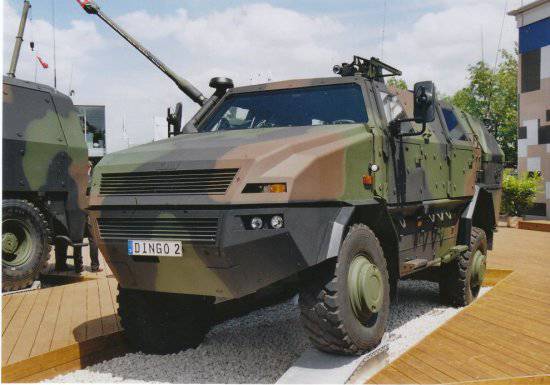
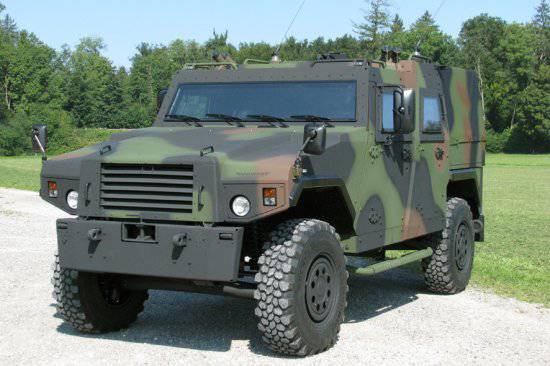
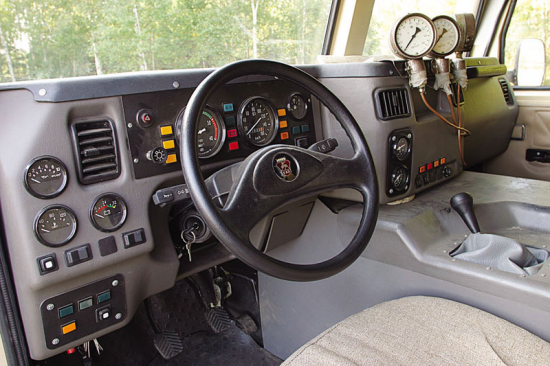
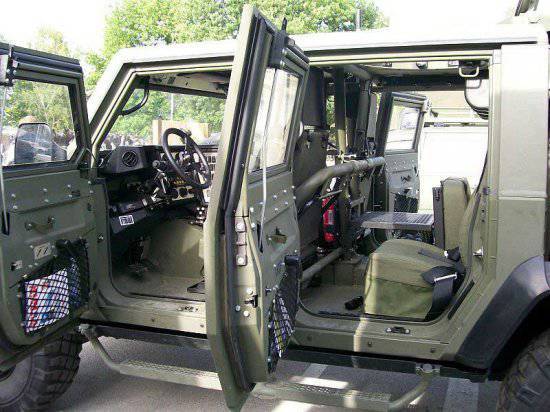
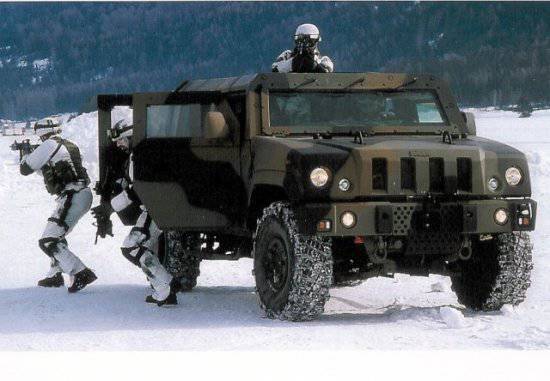
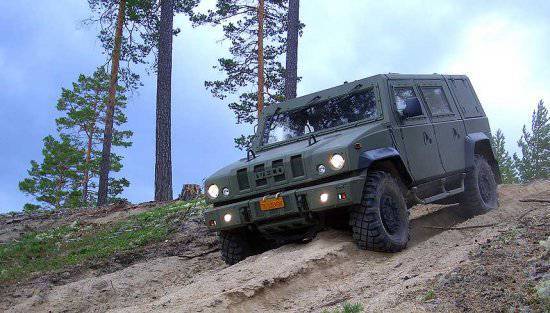
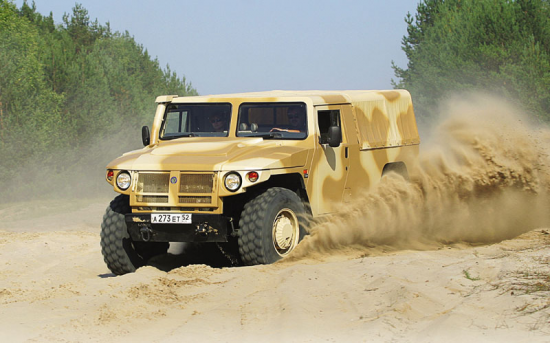
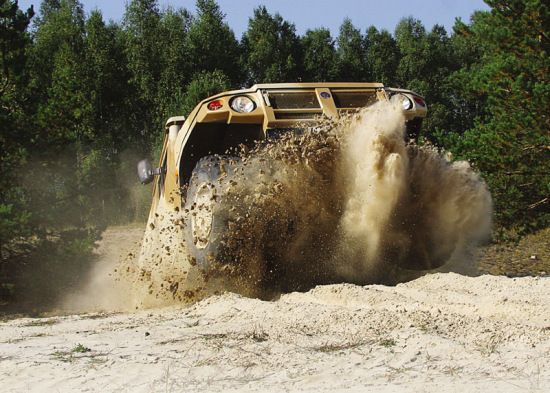
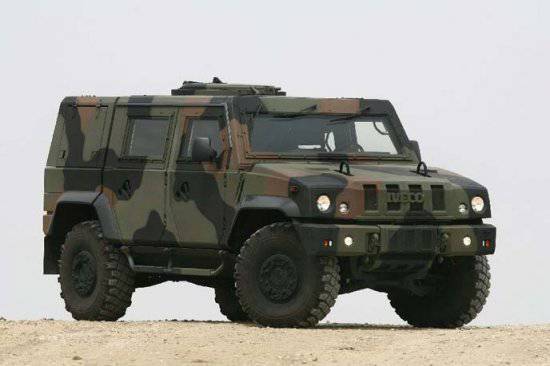
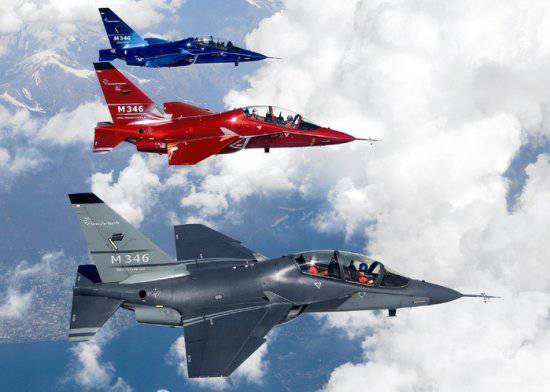
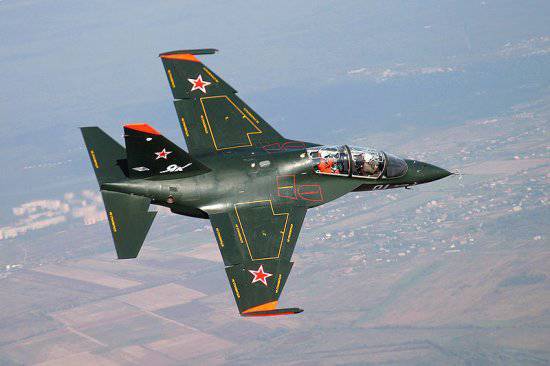
Information